Case Study: Transforming Legal Workflows with AI
Overview
This case study explores the evolution of an AI-powered assistant designed to help legal professionals navigate complex, document-heavy workflows. Originating from a concept unveiled at LegalWeek, the project evolved into a full-featured intelligent agent that enables users to query structured data grids, summarize clauses, and interact naturally with legal content through a conversational interface.
I led the design strategy, end-to-end UX, and cross-functional alignment to ensure the assistant was powerful, trustworthy, and intuitive for non-technical users.
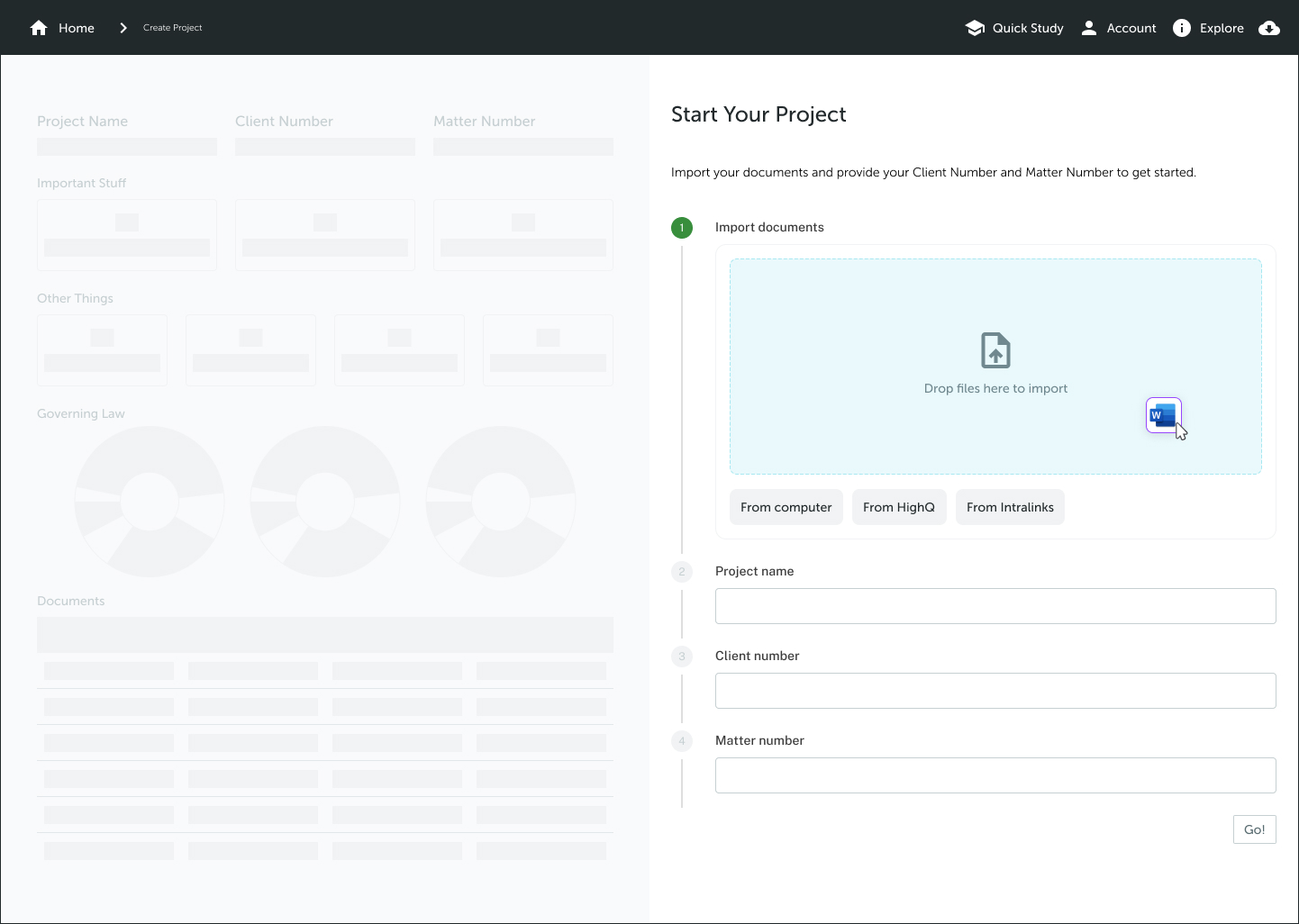
Concept shown at LegalWeek
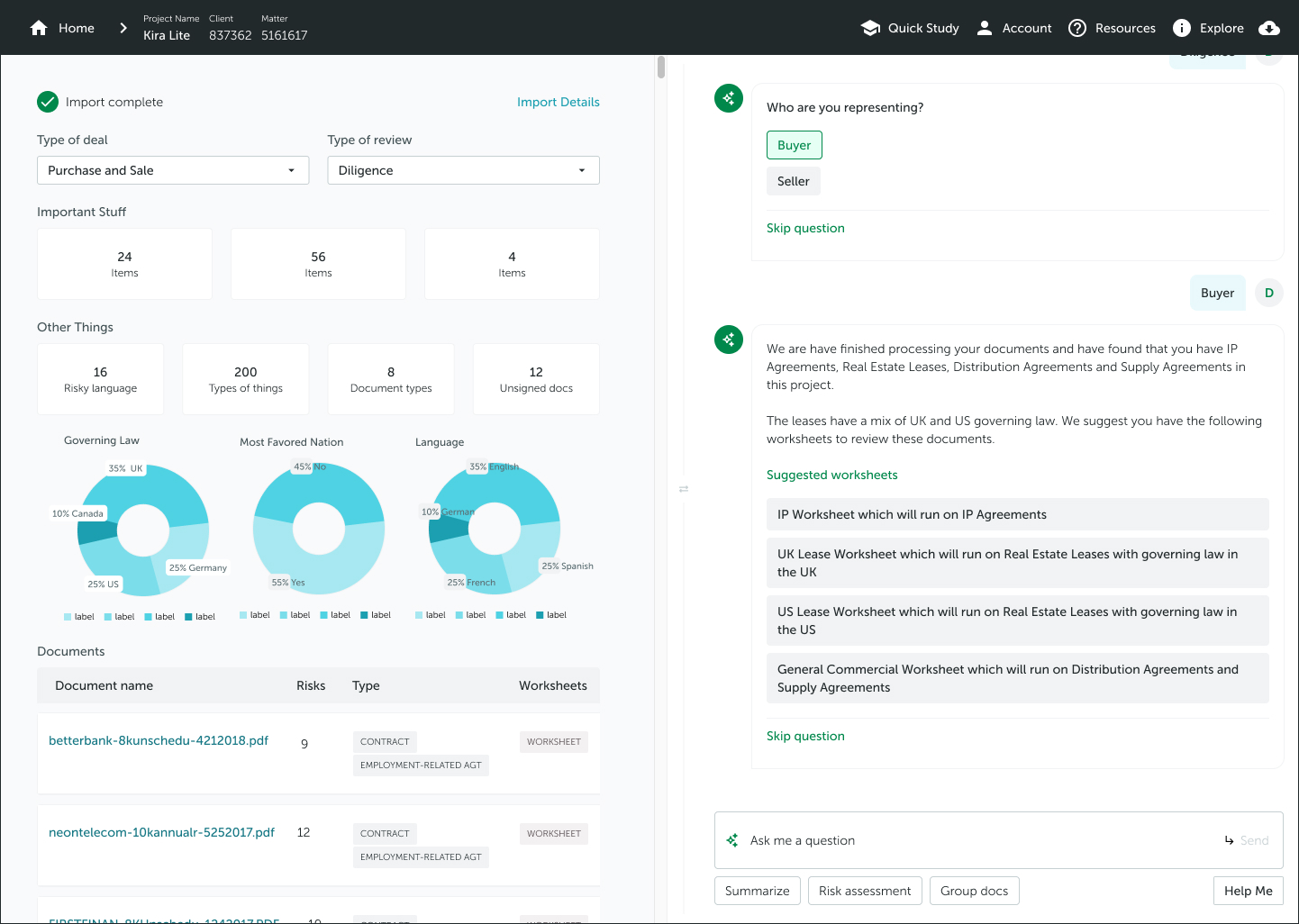
Early assistant interaction mockup
My Role
- Principal Product Designer
- Led concept-to-execution UX across chat, grid, and assistant integration
- Conducted early research at LegalWeek and synthesized 40+ user stories
- Collaborated with engineers, AI researchers, and legal SMEs
- Delivered a prototype and design patterns for future expansion
Problem
Legal teams often review hundreds or thousands of documents per matter. This task is high-stakes, time-consuming, and difficult to scale with traditional tools. Teams lacked:
- Context-aware tools to interact with extractions and summaries
- AI that could clarify ambiguous queries and cite sources
- Interfaces that balanced powerful functionality with clarity and speed
Discovery at LegalWeek
At LegalWeek, we tested an early concept with legal professionals: "What if you could ask a question and get a summary across multiple contracts, complete with citations?"
Lawyers responded with excitement but raised concerns about:
- Trust and hallucination risk
- Needing to control which documents the AI considered
- Wanting summaries plus access to raw excerpts
These conversations laid the groundwork for the following design principles and confirmed the real demand for intelligent document querying.
Design Goals
- Make legal querying as simple as asking a question — without sacrificing control
- Support real-time summarization across structured and unstructured content
- Handle ambiguity responsibly and clearly
- Ground answers in documents with confidence cues and citations
- Empower experts and casual users alike through modular interaction design
Key Design Decisions
From Chatbot to Intelligent Agent
Inspired by LegalWeek feedback, we rejected a simple chatbot model. Instead, we designed for:
- Retained memory across sessions
- Structured task execution
- Conversational precision with legal nuance
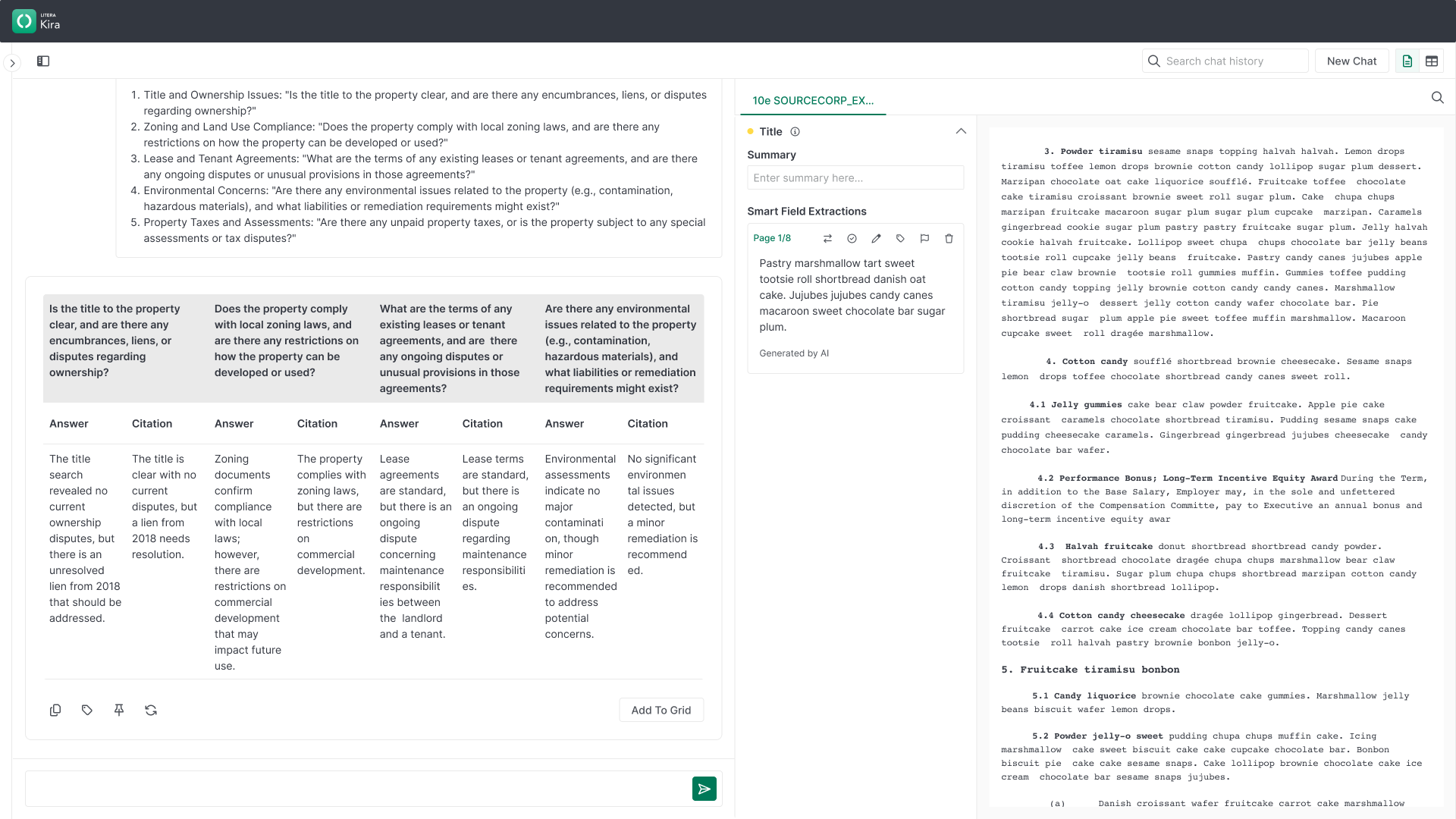
Early concept: AI interface a document viewer
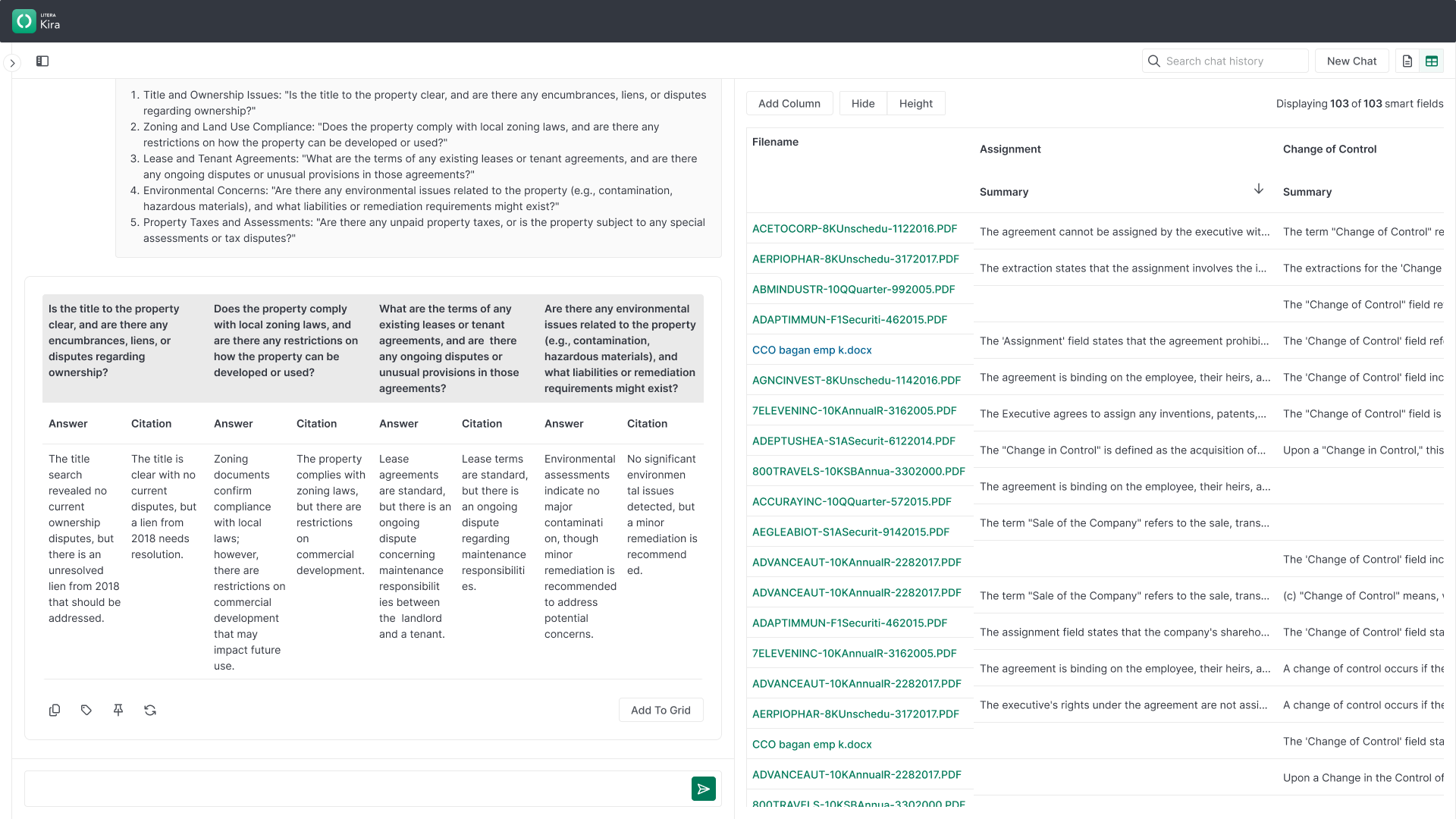
Early concept: AI interface & grid
Clarification Loop for Ambiguous Queries
To mirror how lawyers work:
- The assistant detects vague prompts
- Responds with clarifying questions
- Only delivers results once the query is clear
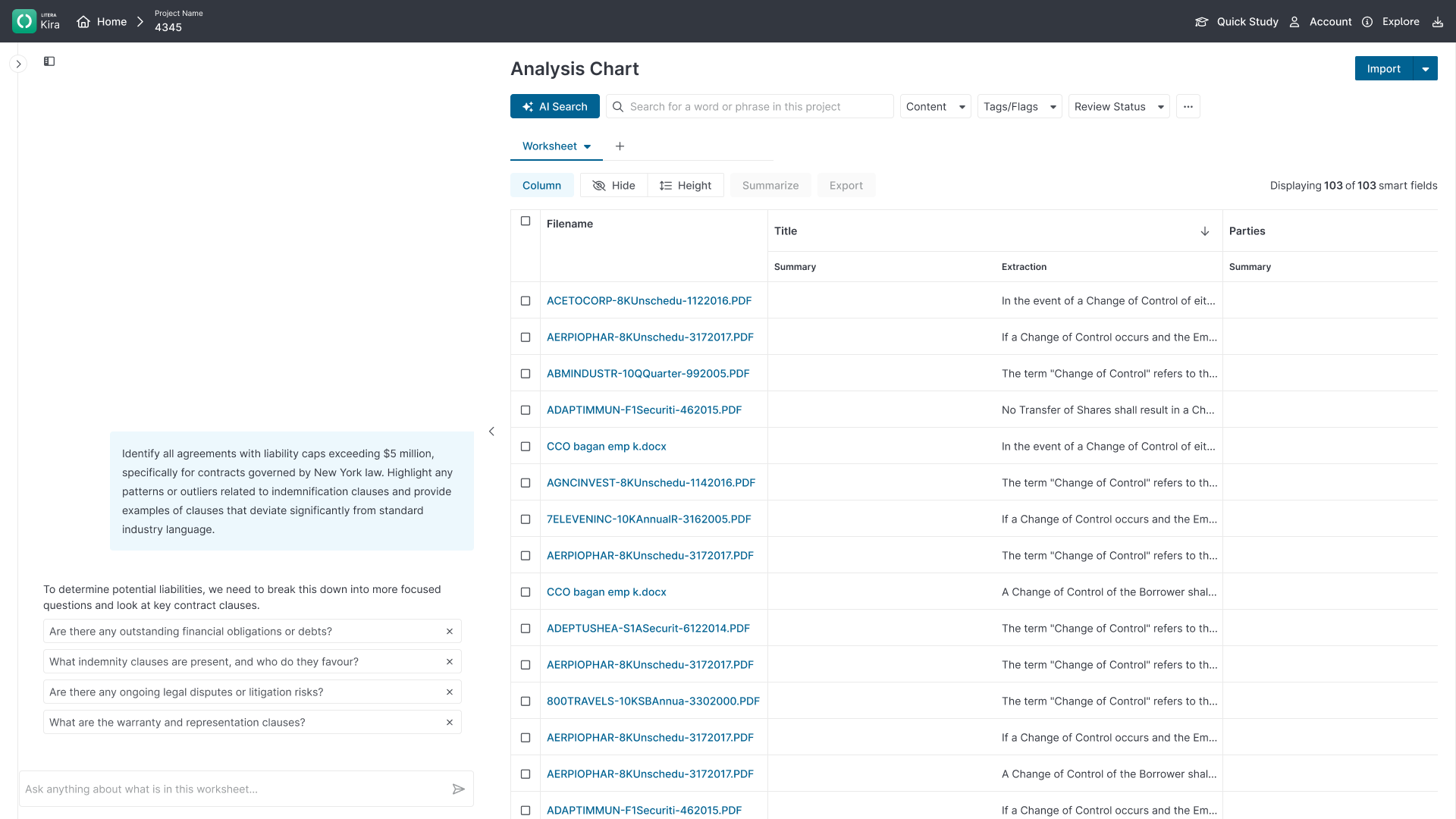
Early concept: AI interface a document viewer
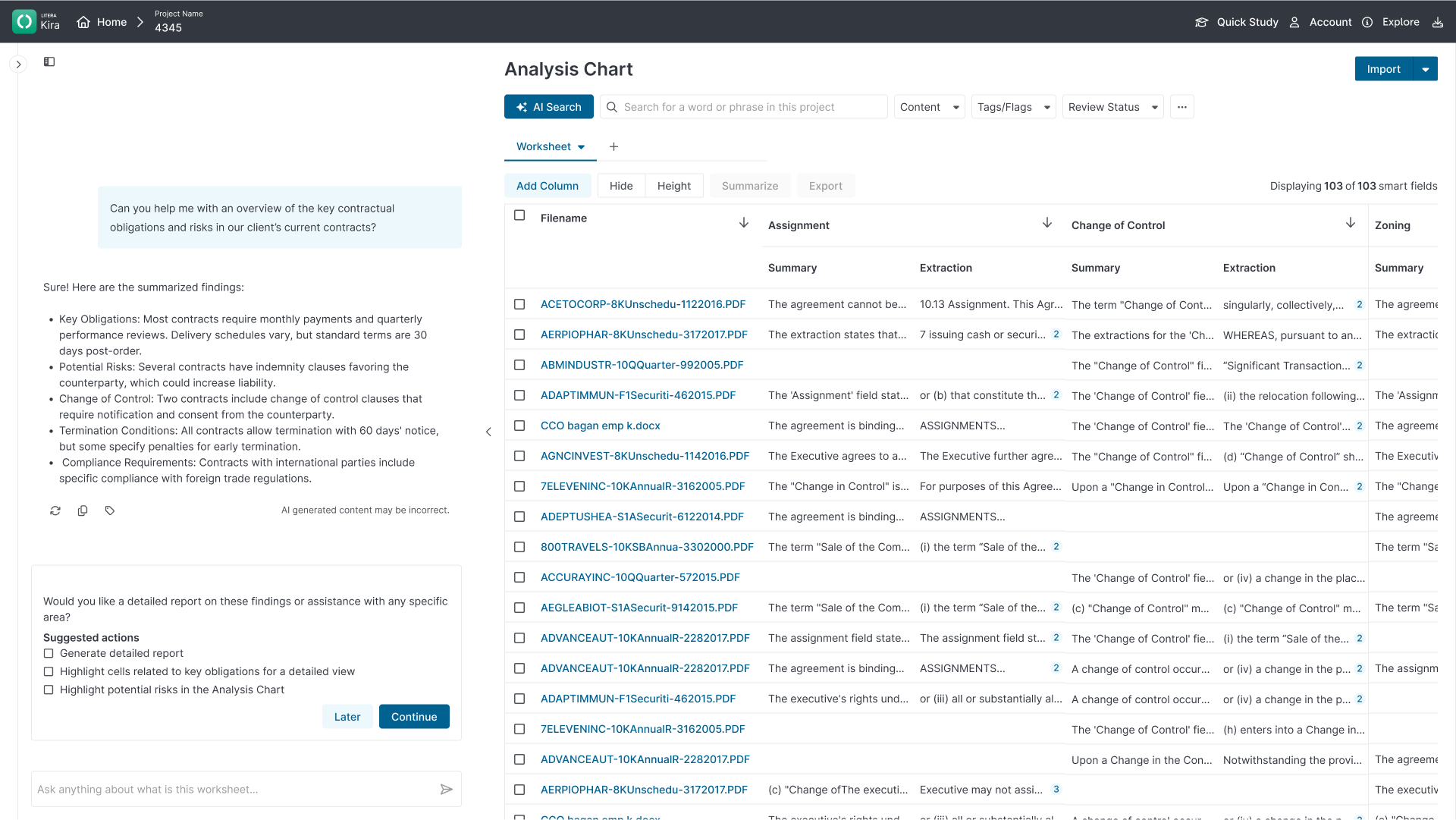
Early concept: AI interface & grid
Interacting with the Legal Grid
- Users click cells to get summaries + full-text excerpts
- Filters limit AI scope
- Prompts can summarize across rows or the entire dataset
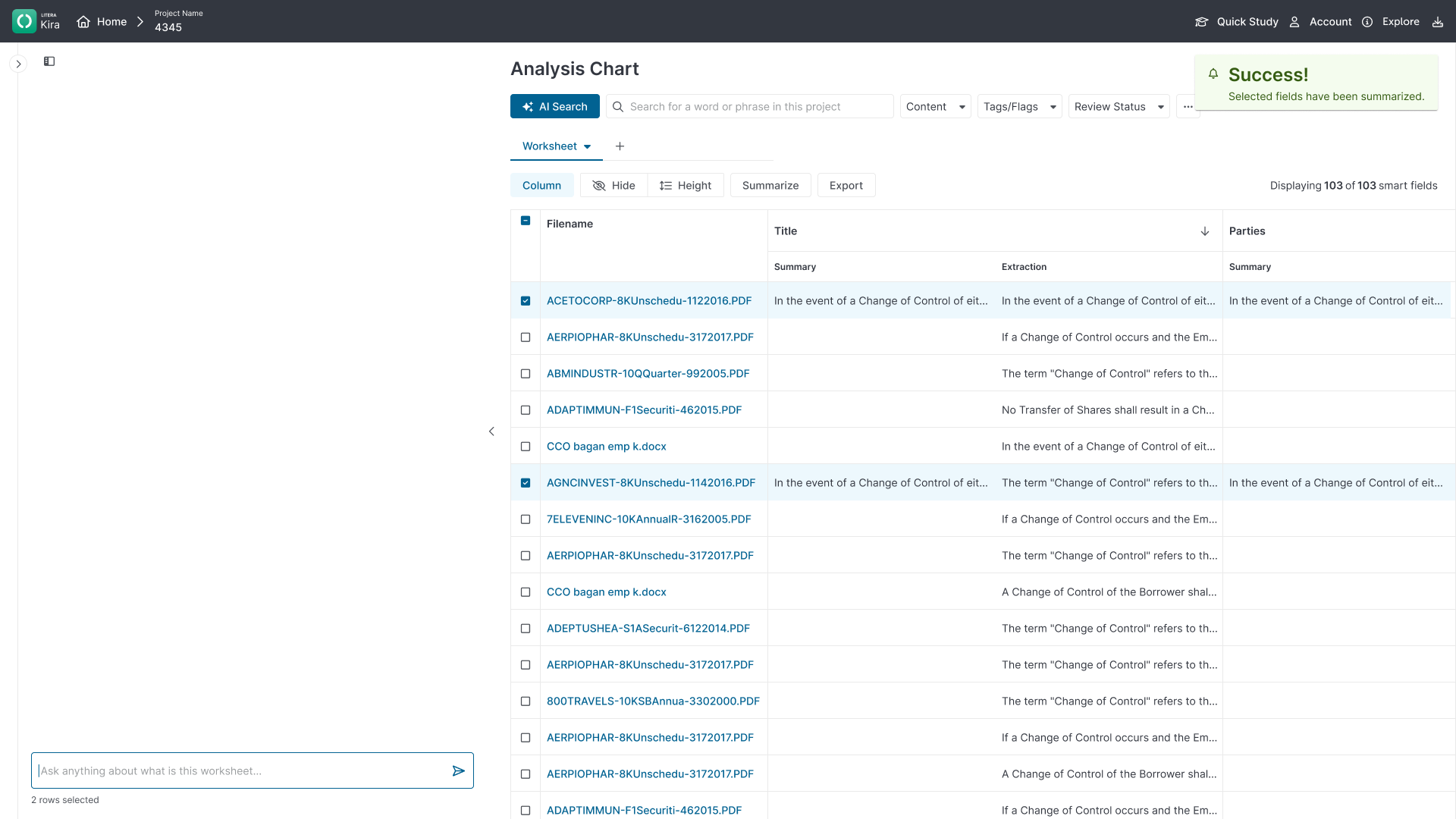
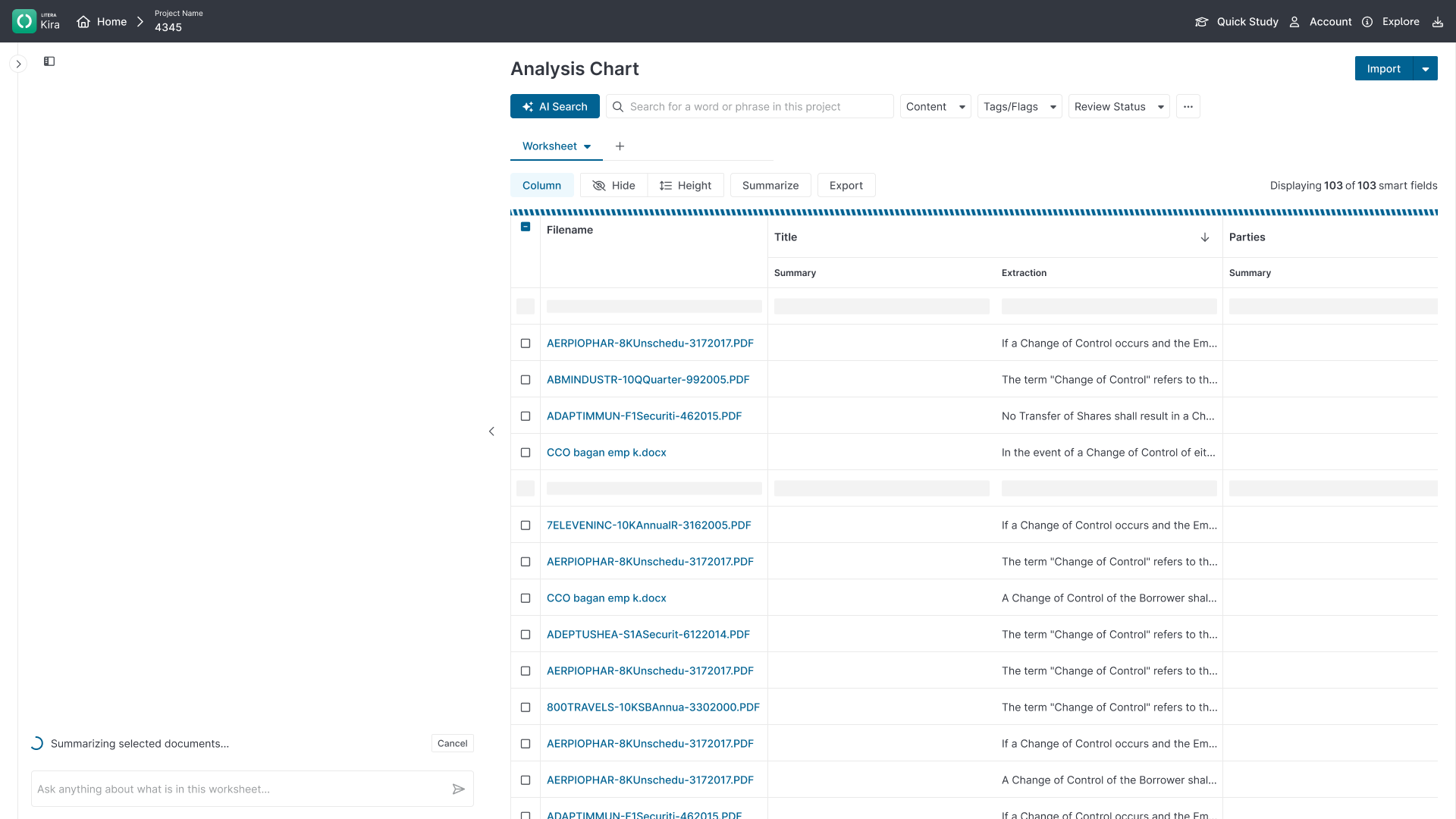
Trust, Citations, and Feedback Loops
- All answers include inline citations
- Confidence scores and "Why this answer?" links build transparency
- Feedback prompts help fine-tune future iterations

Prototyping & Testing
I prototyped several UX flows:
- Ask → Clarify → Summary with sources
- Cell click → Nested excerpt + summarization
- Toggle-based prompt builder for repeat tasks
Test sessions with legal teams helped us refine the following:
- UX writing for clarifications
- The visual weight of trust indicators
- Layout of summary vs source content
Results & Next Steps
- Validated core workflows with 12+ legal teams
- Designed a reusable interaction pattern for LLM + data grid systems
- Developed prompt templates and scoped long-term features like:
- Saved prompt libraries
- Persona-based tone settings
- Project-based chat memory
Conclusion
This project began as a bold idea shared at LegalWeek and evolved into a robust UX framework for integrating AI into legal workflows. It demonstrates my ability to translate early signals into validated features, lead system-level design thinking, and shape product strategy across AI, enterprise UX, and high-trust domains.
